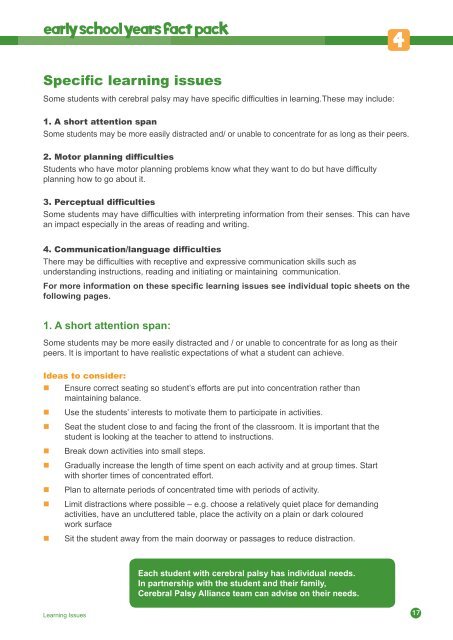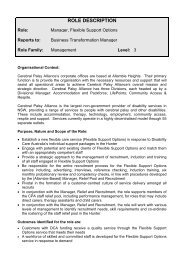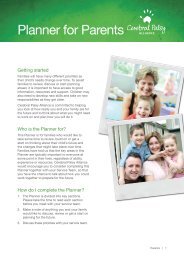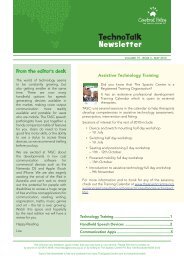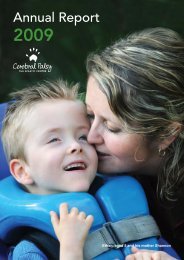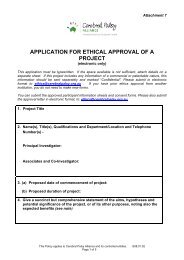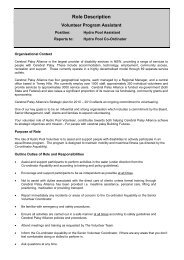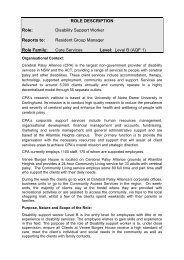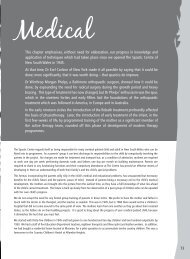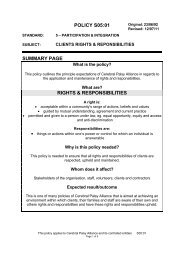Early School Years Fact Pack - Cerebral Palsy Alliance
Early School Years Fact Pack - Cerebral Palsy Alliance
Early School Years Fact Pack - Cerebral Palsy Alliance
You also want an ePaper? Increase the reach of your titles
YUMPU automatically turns print PDFs into web optimized ePapers that Google loves.
early school years fact pack<br />
4<br />
Specific learning issues<br />
Some students with cerebral palsy may have specific difficulties in learning.These may include:<br />
1. A short attention span<br />
Some students may be more easily distracted and/ or unable to concentrate for as long as their peers.<br />
2. Motor planning difficulties<br />
Students who have motor planning problems know what they want to do but have difficulty<br />
planning how to go about it.<br />
3. Perceptual difficulties<br />
Some students may have difficulties with interpreting information from their senses. This can have<br />
an impact especially in the areas of reading and writing.<br />
4. Communication/language difficulties<br />
There may be difficulties with receptive and expressive communication skills such as<br />
understanding instructions, reading and initiating or maintaining communication.<br />
For more information on these specific learning issues see individual topic sheets on the<br />
following pages.<br />
1. A short attention span:<br />
Some students may be more easily distracted and / or unable to concentrate for as long as their<br />
peers. It is important to have realistic expectations of what a student can achieve.<br />
Ideas to consider:<br />
• Ensure correct seating so student’s efforts are put into concentration rather than<br />
maintaining balance.<br />
• Use the students’ interests to motivate them to participate in activities.<br />
• Seat the student close to and facing the front of the classroom. It is important that the<br />
student is looking at the teacher to attend to instructions.<br />
• Break down activities into small steps.<br />
• Gradually increase the length of time spent on each activity and at group times. Start<br />
with shorter times of concentrated effort.<br />
• Plan to alternate periods of concentrated time with periods of activity.<br />
• Limit distractions where possible – e.g. choose a relatively quiet place for demanding<br />
activities, have an uncluttered table, place the activity on a plain or dark coloured<br />
work surface<br />
• Sit the student away from the main doorway or passages to reduce distraction.<br />
Each student with cerebral palsy has individual needs.<br />
In partnership with the student and their family,<br />
<strong>Cerebral</strong> <strong>Palsy</strong> <strong>Alliance</strong> team can advise on their needs.<br />
Learning Issues<br />
17


